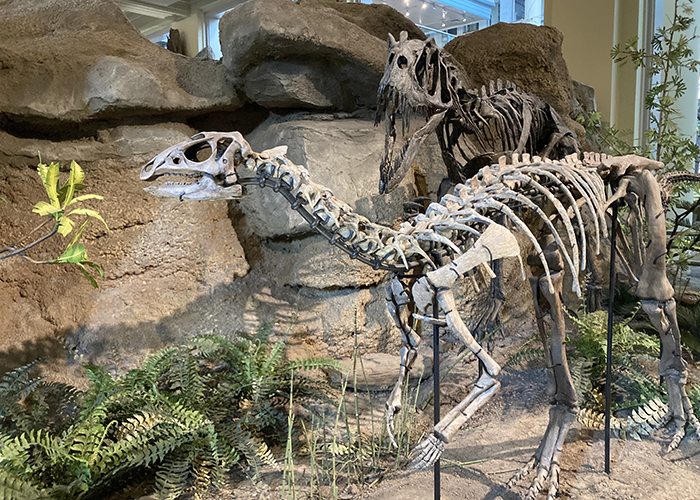 Previous Day |
Pittsburgh, PA → Cleveland, OH 135.0 mi (217.3 km) |
 Next Leg |
Steel your resolve, everyone!
Today, I’m filling up the morning with more neat stuff in the Steel City: Pittsburgh, PA! And what name could be more thoroughly forged into this city than Andrew Carnegie! After making his millions in steel, railroads, and oil, Mr. Carnegie donated about 90% of his wealth by the end of his life to international peace causes, libraries (his first in the US pictured below), and fossil finding expeditions, among others!
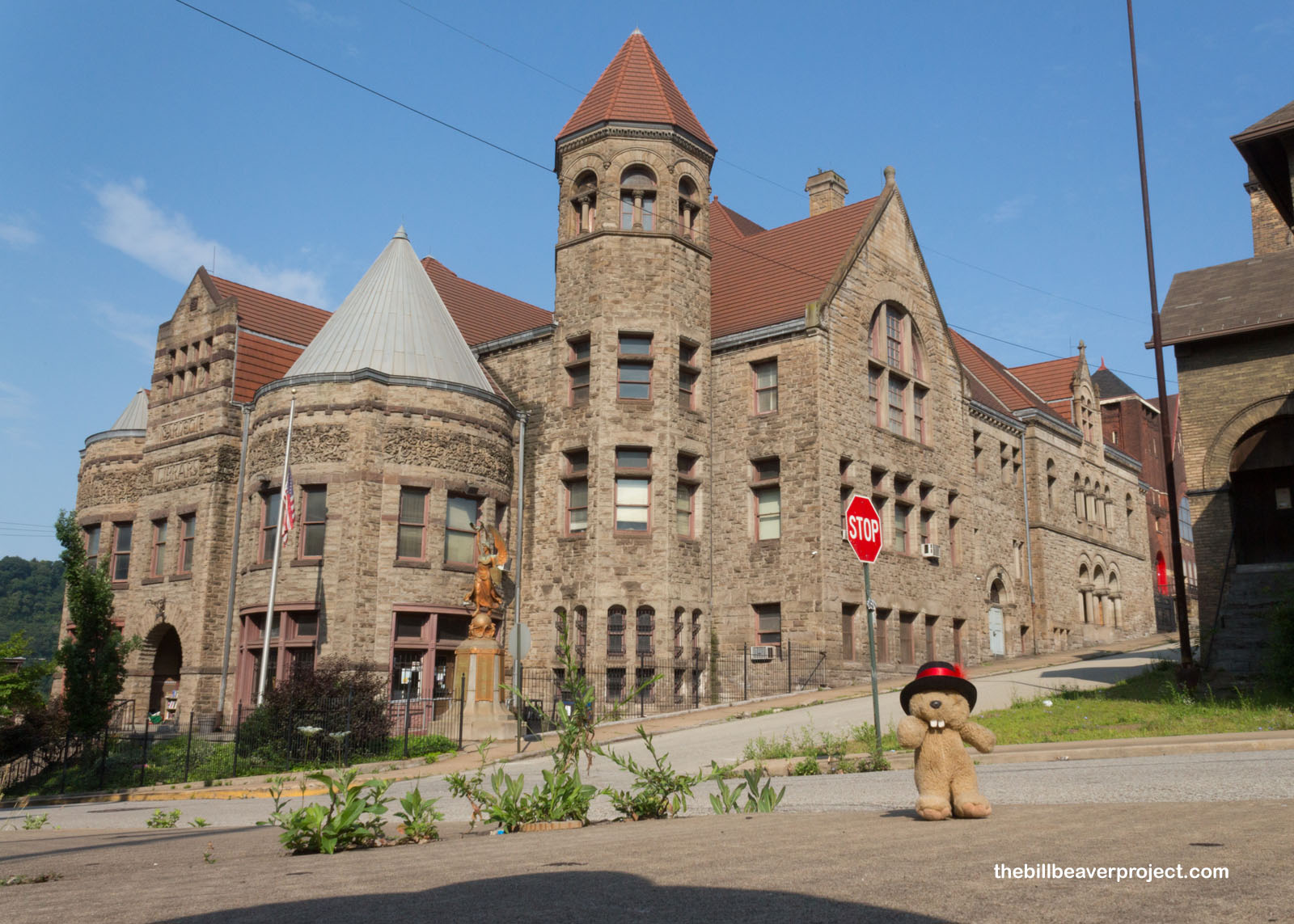 |
Today, I wanted to see some of the famous finds now housed inside the Carnegie Institute’s Museum of Natural History! Opening its doors in 1895, one year after Chicago’s Field Museum, the Carnegie museum also amassed a huge collection of Egyptian artifacts, minerals, taxidermy specimens, and of course, dinosaur bones, 446 crates of which were from a Carnegie-funded excavation that we now call Dinosaur National Monument!
 |
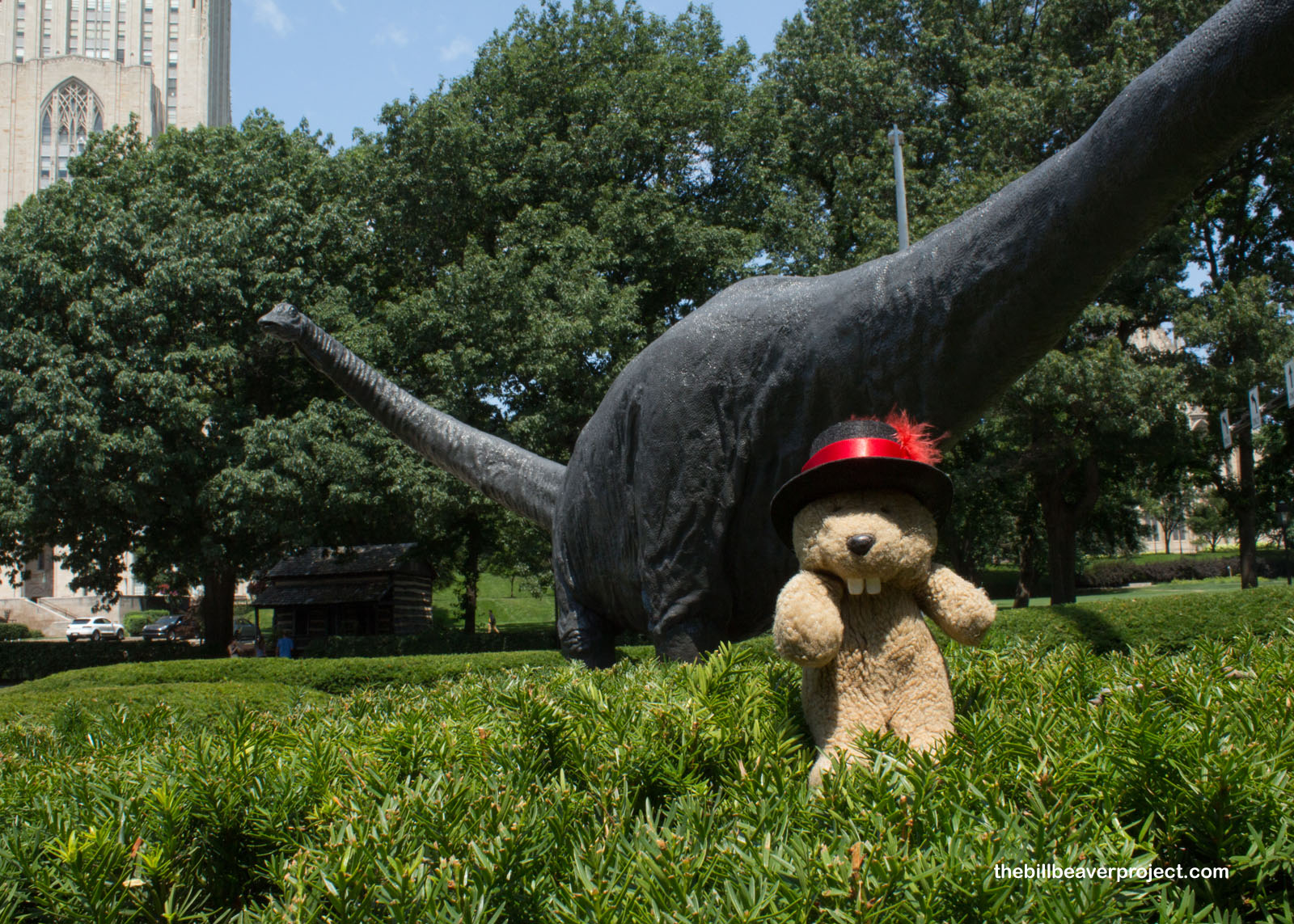 |
Being a fossil fan myself, I immediately made for the Dinosaurs in their Time exhibit, where I found myself face to familiar face with a Herrerasaurus ischigualastensis! While that might not mean much to the average Joe, or Bill, the last place I saw one of these ancient predators was in a whole different hemisphere at Ischigualasto Provincial Park in Argentina!
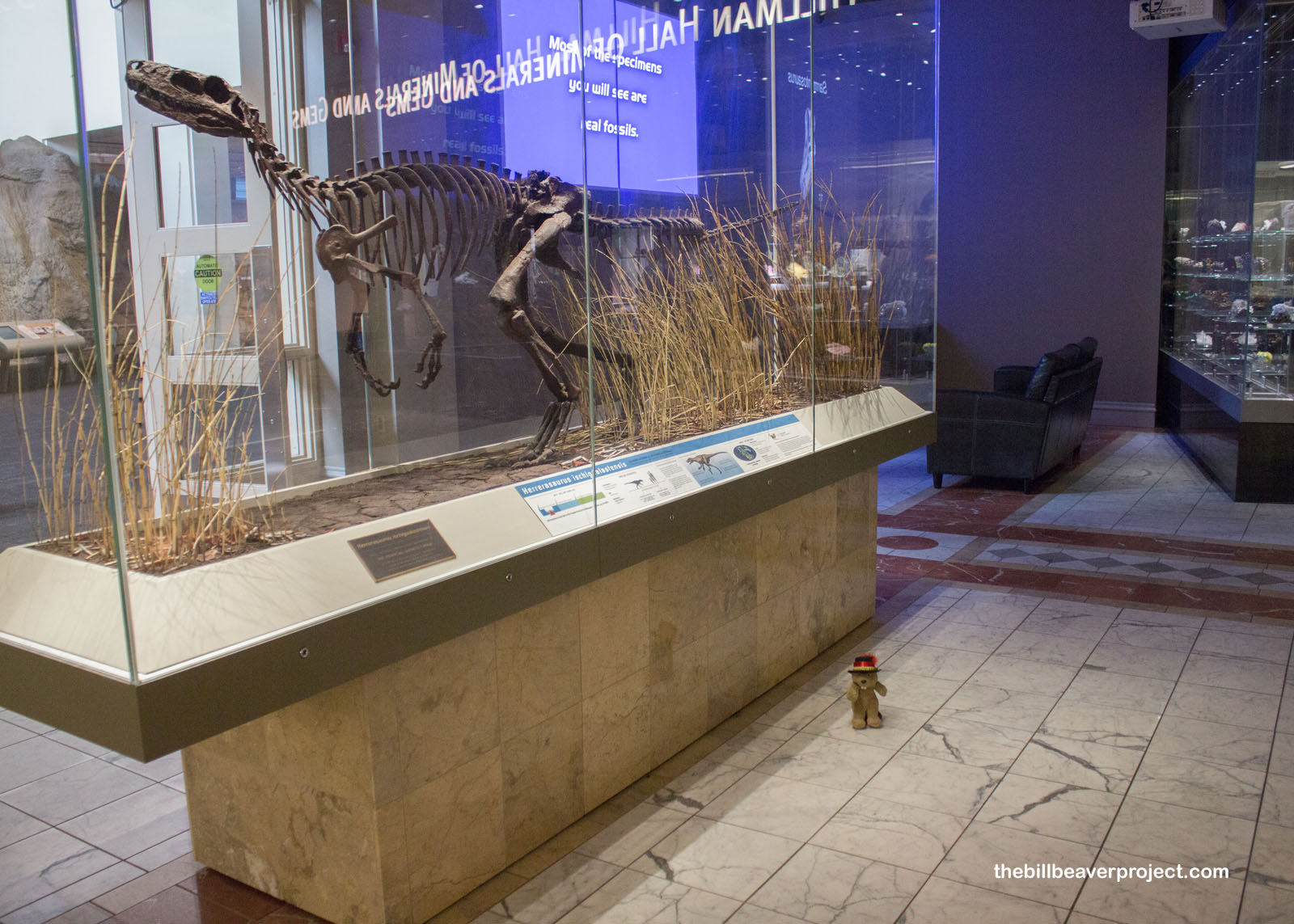 |
And there were more familiar faces just inside the exhibit, like this young Camarosaurus, whose likeness I just saw last year on my epic roadtrip! It was a Camarosaurus like this one whose mismatched head created the 47-year myth of Brontosaurus, right here in this very museum in 1932!
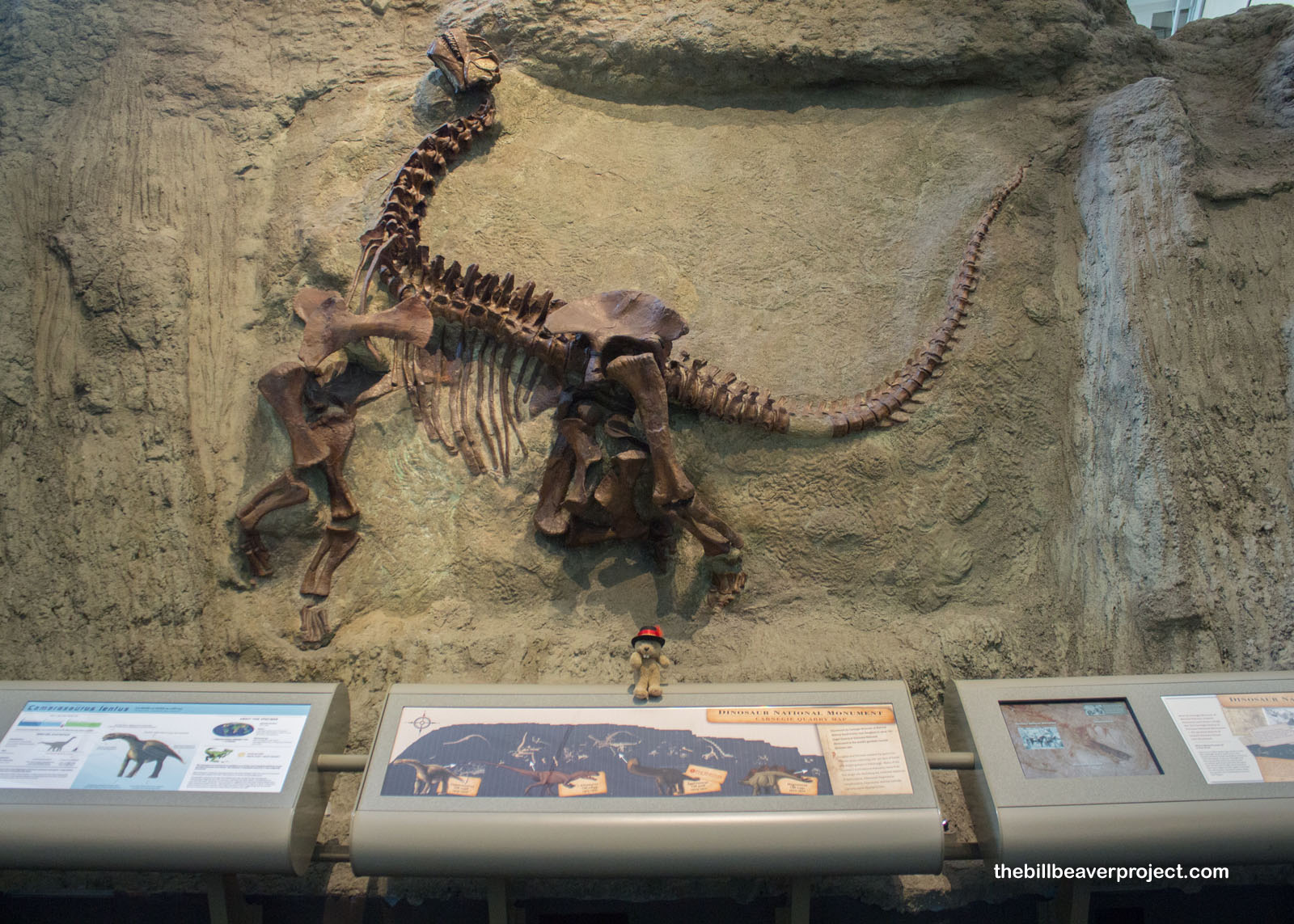 Original Fossil |
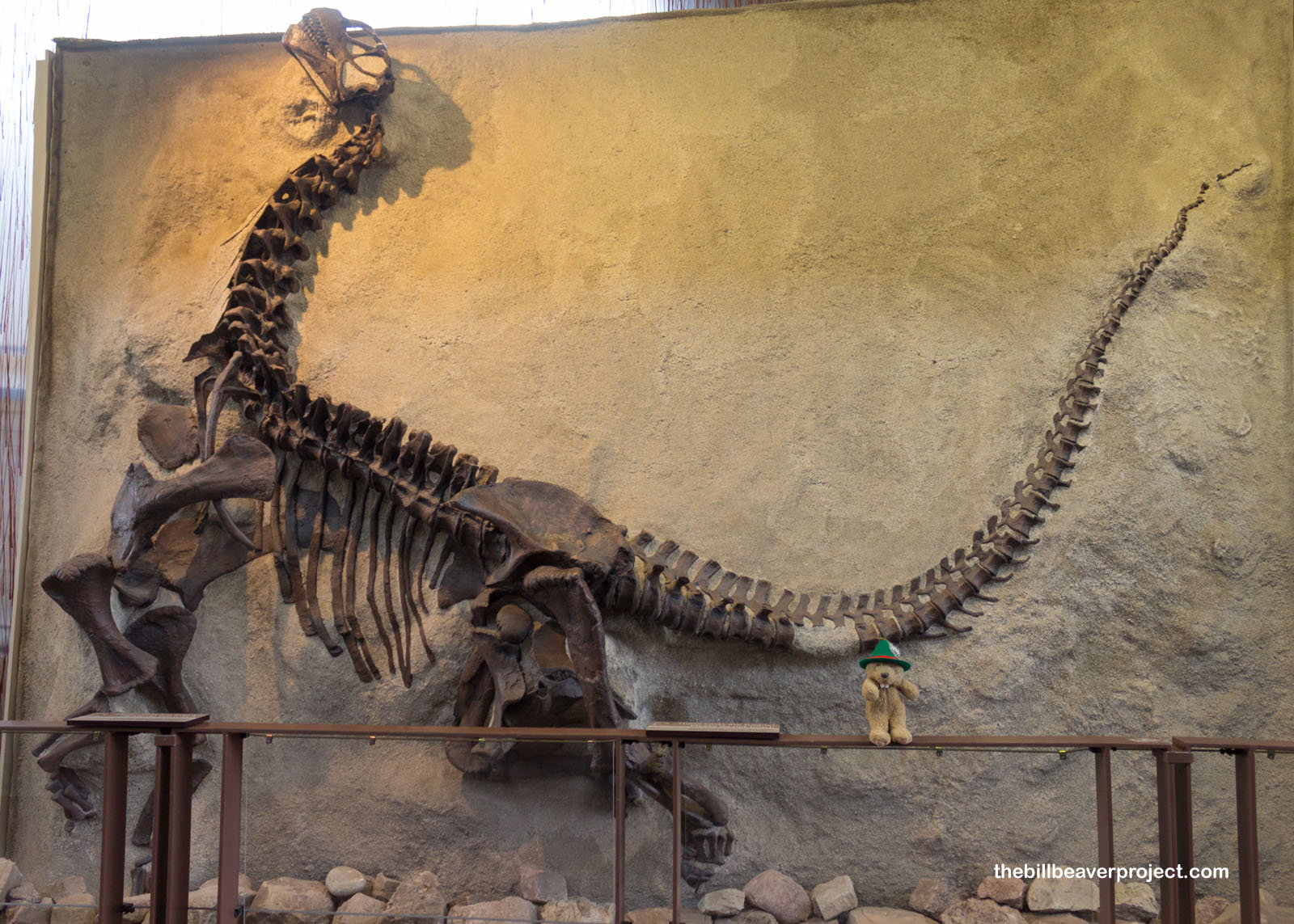 Clever Replica |
In the very next room were two very famous sauropods: the original Apatosaurus/Brontosaurus skeleton (left of frame) and its equally historic Diplodocus pal, Dippy (right of frame)! Excavated from the Museum’s first dinosaur expedition and put on display in April of 1907, Dippy introduced millions of people to dinosaurs for the first time and may be the most famous dinosaur skeleton in the world! Though technically composed of 5-6 different dinosaurs, casts of the Dippy skeleton have been sent to other museums around the world, including another famous cast in the Natural History Museum of London! Billed as the “The Most Colossal Animal Ever on Earth,” Dippy is revered as having made the Museum the destination that it remains today!
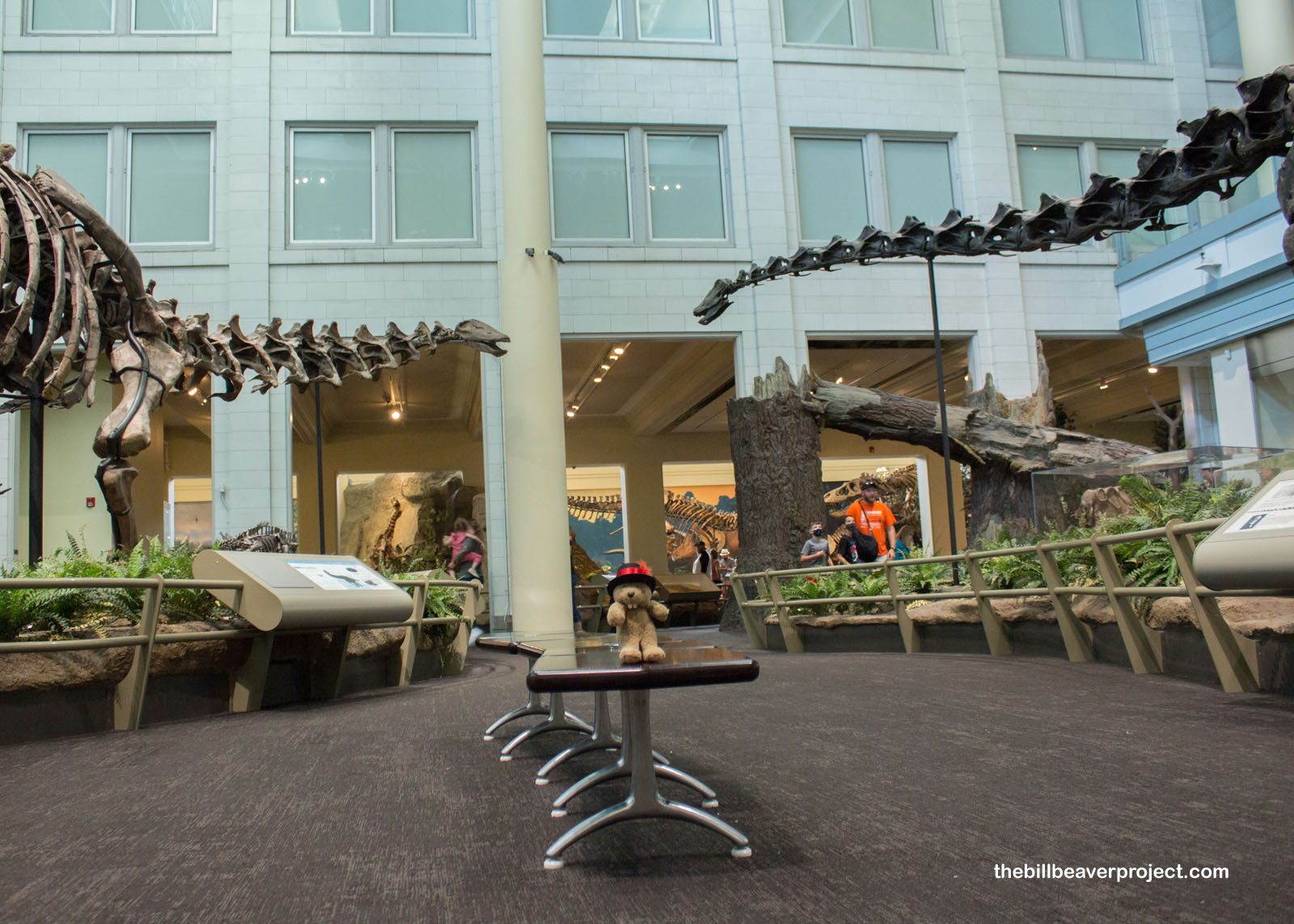 |
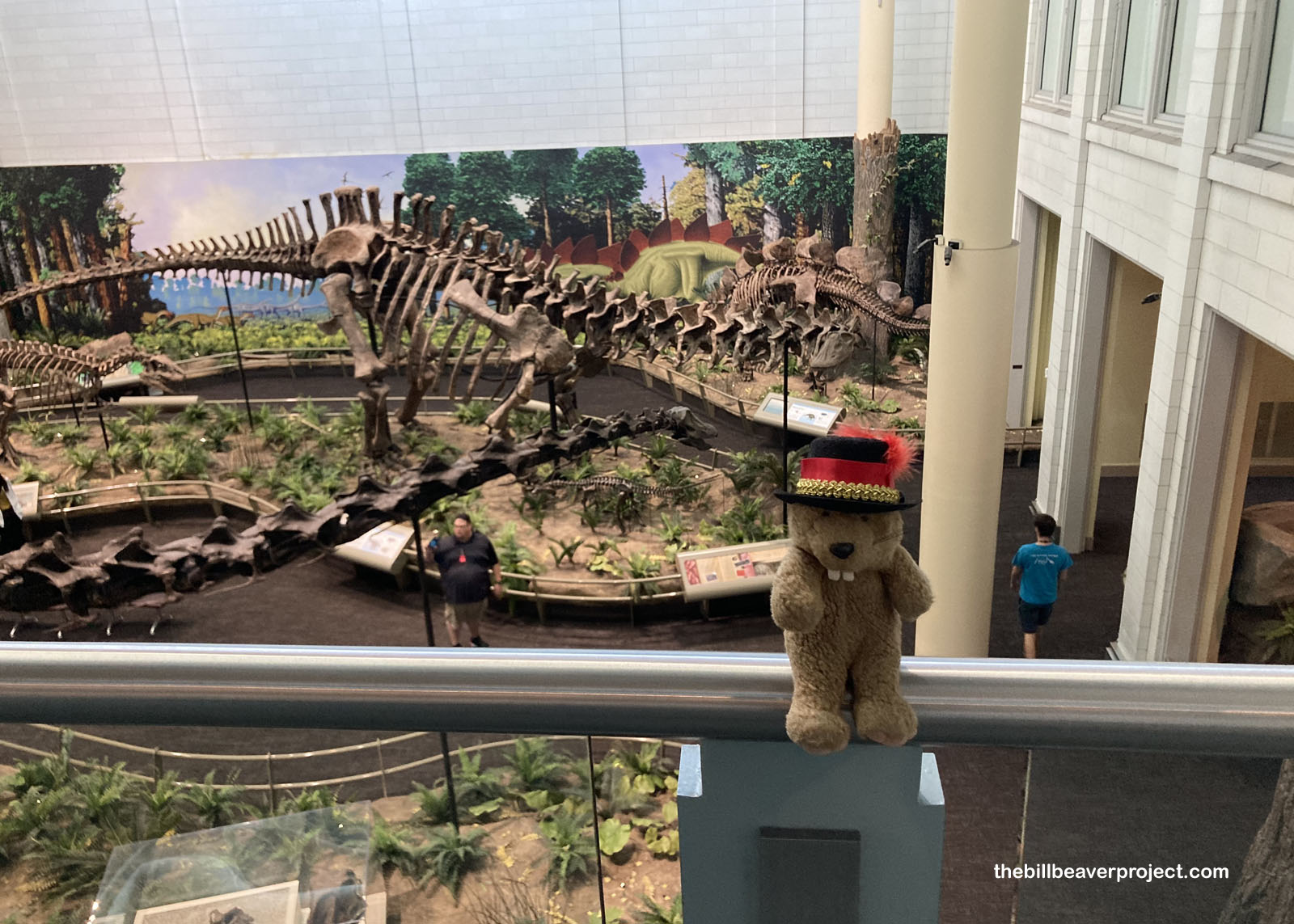 |
Another famous fossil that has captured the hearts of people worldwide is the Carnegie Museum’s Tyrannosaurus rex, the first specimen ever discovered! Originally dug up by Barnum Brown in 1902, this huge therapod was originally on display in New York, but the Carnegie Museum purchased it in 1941! Since then, it has changed from an upright, clunky creature to a sleeker, more terrifying goliath that uses its tail for balance!
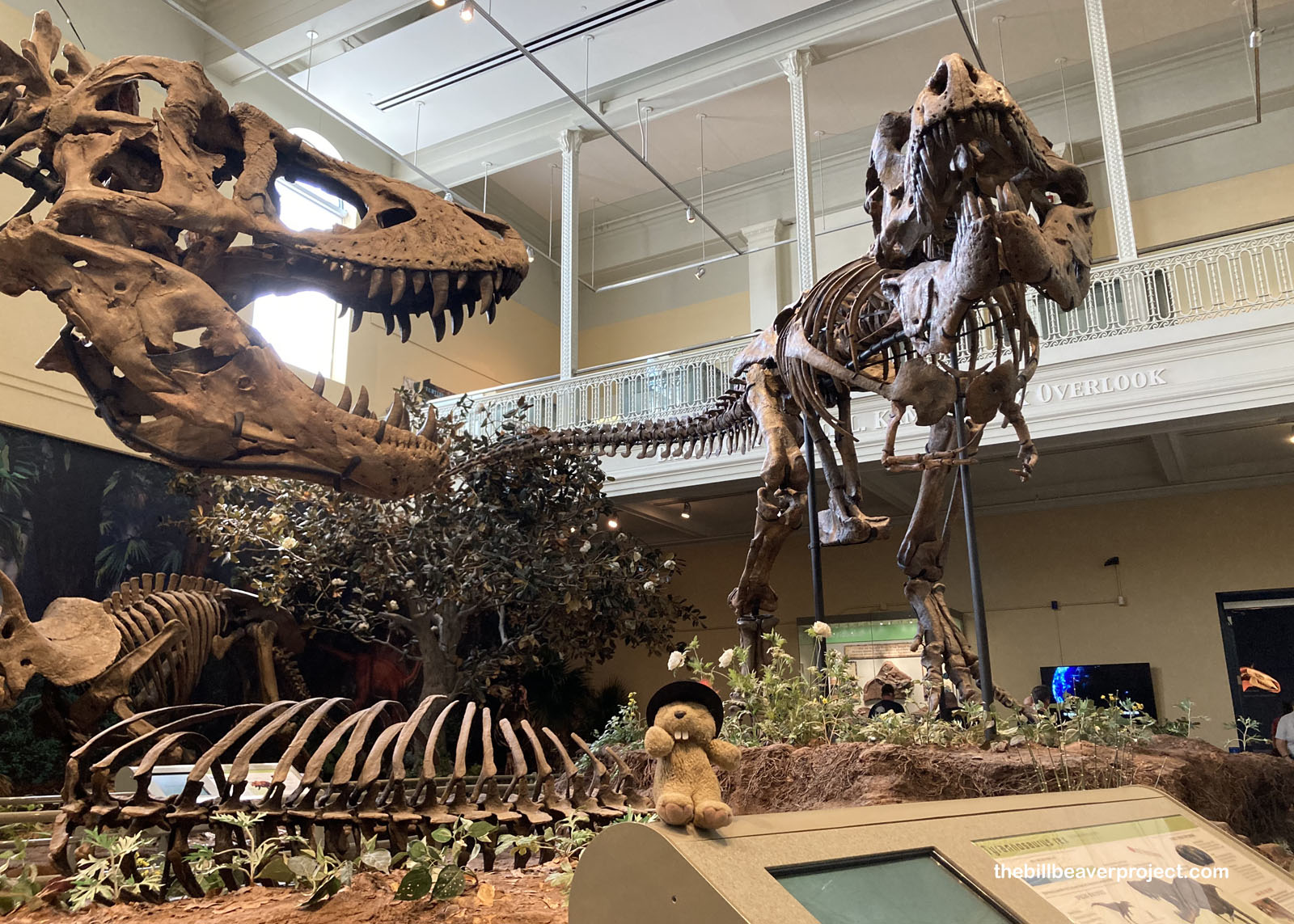 |
I only really had the morning to explore the main sights of the Museum, including the half-and-half Moropus in the adjacent hall of ancient mammals. I’m fascinated by Moropus, a huge, ancient relative of rhinos and tapirs, but with claws! I wouldn’t want to mess with this fellow on the plains of the Miocene!
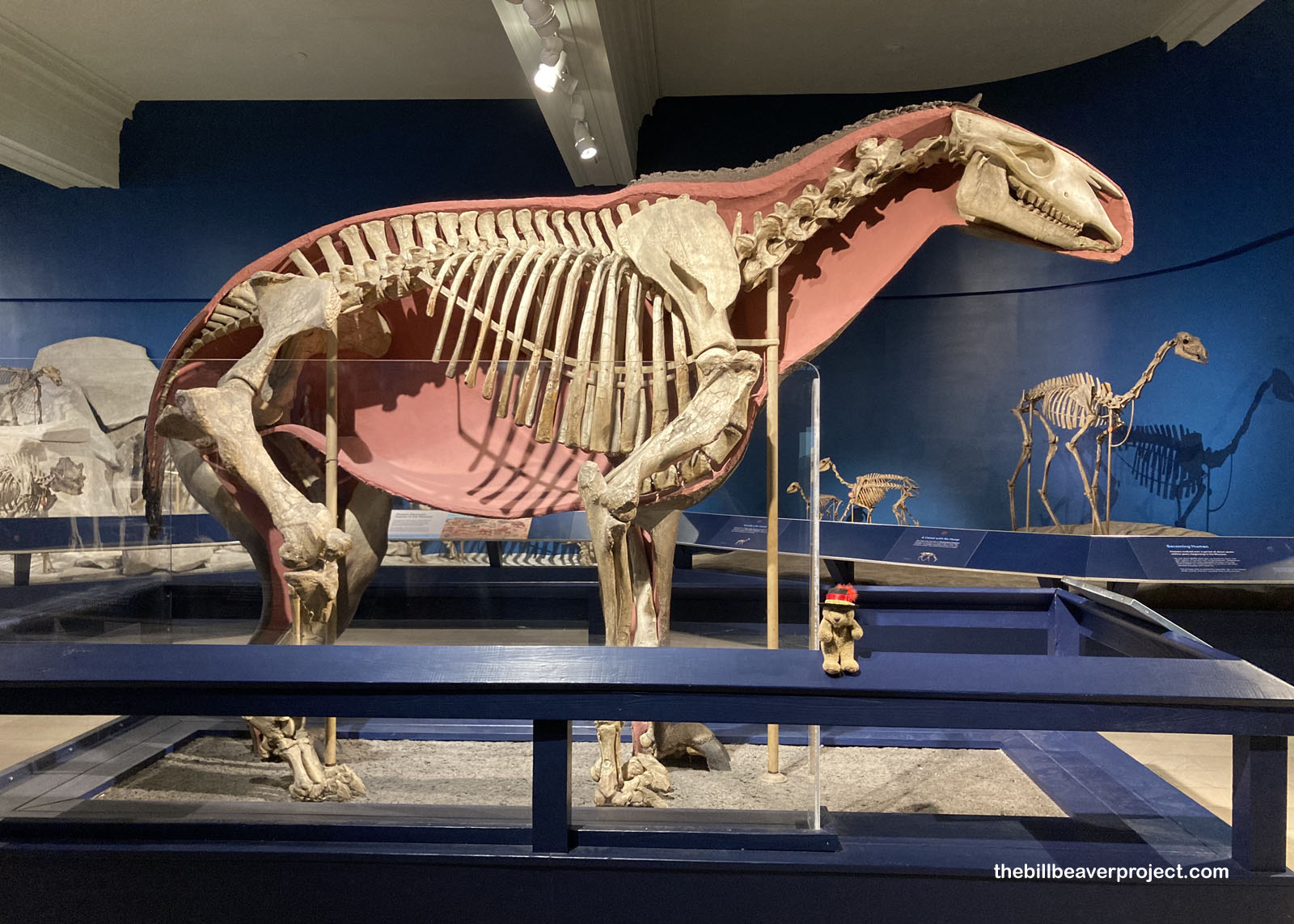 |
Then what to my wondering eyes should appear but another taste of something familiar! This Harlan’s ground sloth, smilodon, and dire wolf were all excavated from the La Brea Tar Pits, right in my backyard! What a surprise!
 |
Lastly, I toured some of the human-oriented halls, but I didn’t take many pictures for one specific reason: the Carnegie Museum, more than any other I’ve visited, is reexamining how it displays artifacts from different cultures. For instance, the sarcophagus in the photo below once had a body inside, which was dug up to be put on display. Certain sacred items had been removed from display in the Native American halls until a full consultation with tribal elders had been completed!
Most famously, though, the Museum still had a famous taxidermy display in its main hall, called “Lion Attacking a Dromedary!” I took a photo for its history, then deleted it when I learned more about this 1867 diorama. See, at the time, France had colonized Algeria, Morocco, and Tunisia, and the French taxidermist used the lions to represent colonial conquest of the camel and rider (the people of North Africa). The symbols were problematic on their own, but recent analysis of the rider found that it contains actual human remains, a dark piece of history indeed!
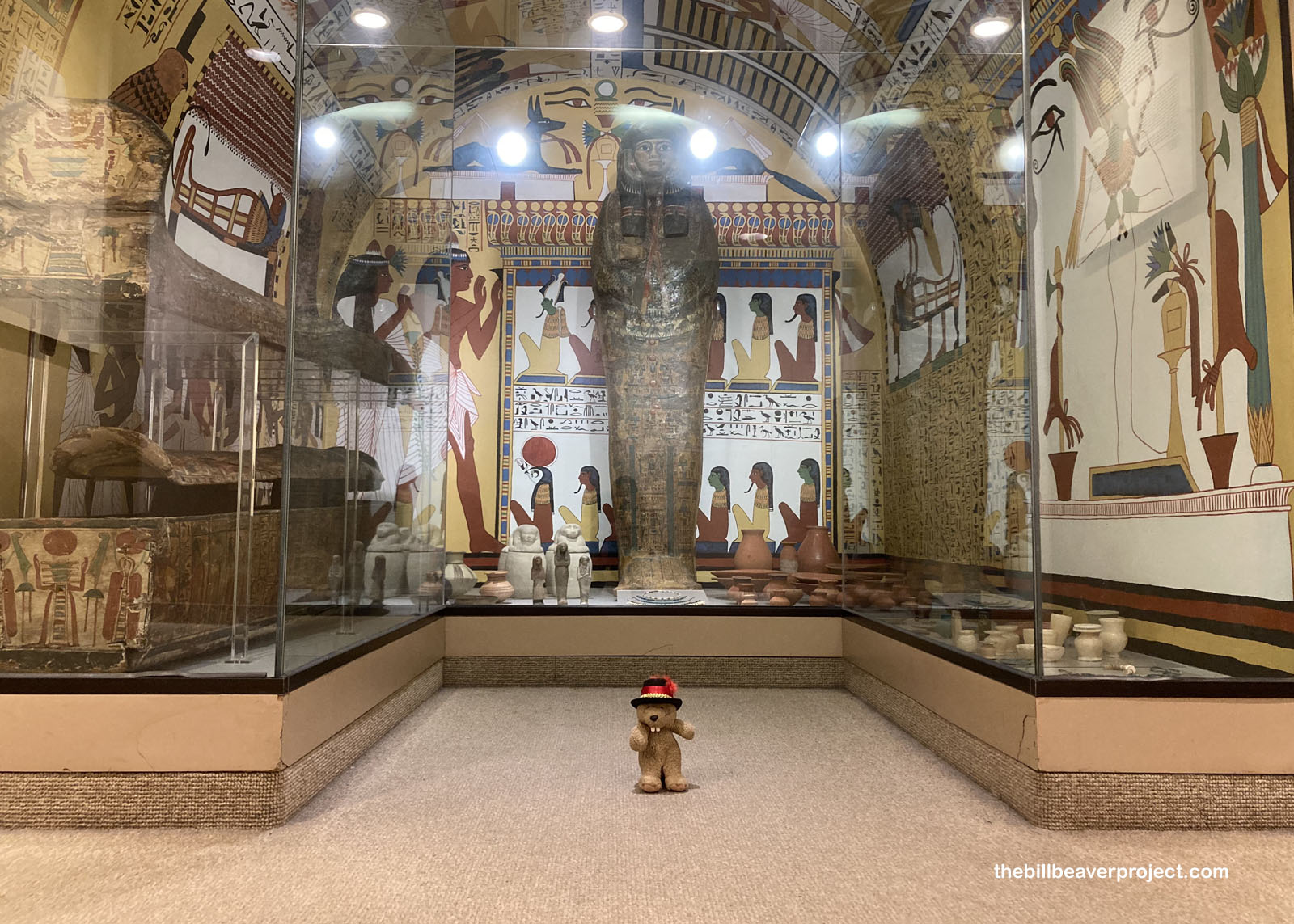 |
Like the Field Museum, I could have spent another week here, but I had promised my friends, Danielle and Sam, that I would be to their house in Cleveland by a reasonable hour to help them pack for a move. So, I bid farewell to the Carnegie Museum and all its historic wonders, and headed back to the Pennsylvania Turnpike for the last leg of this adventure.
There’s no place like bones!

 Previous Day |
Total Ground Covered: 1,009.0 mi (1,623.9 km) |
 Next Leg |
